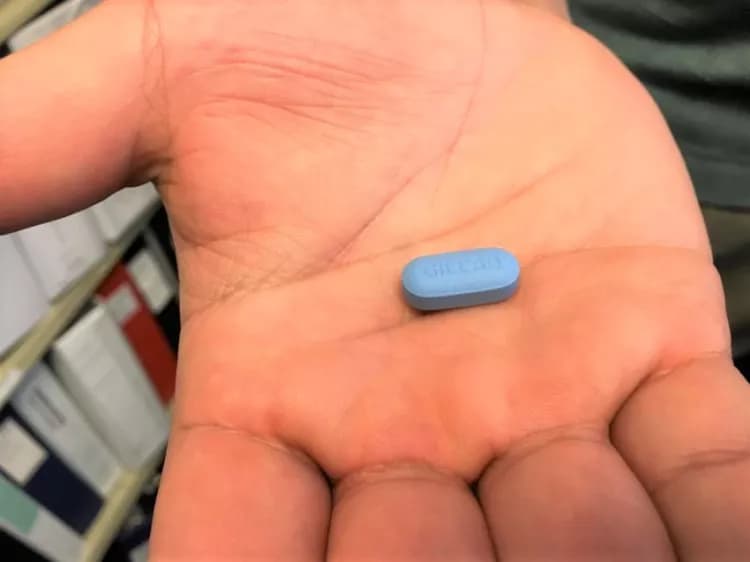
New Way To Assess Medication-Based HIV Prevention Proposed
One of the most promising new approaches to slowing the spread of HIV is pre-exposure prophylaxis (PrEP), a once-a-day medication that people who don't have HIV can take to prevent becoming infected. But that strategy only works if people at risk for contracting HIV become and remain fully engaged in preventive care and actually take the pills. In the real world of clinical practice, that has often proved tricky.
In a new article in the journal AIDS, a Brown University-based team of researchers draws on their experience in providing and carefully studying PrEP programs to propose a new system for understanding and evaluating how PrEP is implemented in clinical practice. By viewing the process as a continuum with nine specific steps, they write, researchers and clinical providers can properly assess where patients might fall out of preventive care that can help them remain HIV-negative.
"It's helpful to visualize PrEP care as a continuum, because patients can drop out at any point on this long continuum," said Dr. Philip Chan, co-author of the paper, assistant professor of medicine at Brown's Warren Alpert Medical School and an infectious disease physician at the Miriam Hospital, where he runs a PrEP program serving all of Rhode Island. "We are providing a framework for how we can identify and assist people who are at high risk for acquiring HIV to stay uninfected."
In these early days of PrEP programs, physicians nationwide have found that it's sometimes difficult to retain patients in care and ensure that they are keeping up with -- or "adhering" -- to their medicine, said lead author Amy Nunn, associate professor at the Brown University School of Public Health. In early academic trials of PrEP, adherence to the medication was promising, but outcomes in research studies are often different than in the grittier domain of real-world clinical settings.
"Important research trials and CDC-funded demonstration projects have proven PrEP was overwhelmingly effective in reducing HIV acquisition," Nunn said. "But it's time to move beyond research trials to implement and study how to scale PrEP in safety net and primary care settings, where it's needed most. We propose an approach based on our experiences providing PrEP to people in real-world clinical settings that helps us evaluate how to measure population progress."
In a study last year analyzing the progress of clinical programs in cities in Rhode Island, Mississippi and Missouri, Nunn, Chan and colleagues found that among patients who sign up to begin PrEP, only about 60 percent remained in care after six months.
In this study, their goal was to identify elements of the process where interventions could improve access to PrEP and the retention of patients in care.
Nine PrEP steps
The nine proposed steps are: (1) identifying individuals at highest risk for contracting HIV; (2) increasing HIV risk awareness among them; (3) enhancing PrEP awareness; (4) facilitating PrEP access; (5) linking to PrEP care; (6) prescribing PrEP; (7) initiating PrEP; (8) adhering to PrEP; and (9) retaining individuals in PrEP care.
In much of the nascent research literature of the field, scholars have looked at a looser progression of four steps (identifying those at risk, increasing PrEP knowledge, ensuring access to PrEP, ensuring medication adherence), but Chan and Nunn said that such a general process leaves too many gaps where problems can be missed.
"The process is more complicated and nuanced than many people think," Chan said.
For example, even when some patients have been identified as being at risk to contract HIV and have been well-informed about what PrEP is, they still might not appreciate their HIV risk enough to feel sufficiently motivated to take PrEP, Nunn and Chan said. PrEP does have side effects and can be expensive. That's why the steps of identifying patients who are suitable candidates for PrEP and making sure they understand their degree of HIV-infection risk are critical.
In another example, the researchers noted that adherence is not always the most accurate measure of success for evaluating the public health impact of PrEP. Retention in care may be more important, they said. On one hand, adherence to PrEP isn't the only measure that high-risk patients should take to protect themselves from HIV transmission -- routine testing for HIV and other sexually transmitted diseases, counseling about reducing sexual partners, using condoms and understanding community-level HIV risks can also be important, Nunn and Chan said. On the other hand, some patients may no longer require PrEP over time as they change their risk behaviors and sexual partnerships. A person who settles into a monogamous sexual relationship and practices safe sex might not need PrEP anymore, but that shouldn't be perceived as an HIV prevention failure requiring intervention.
In a future study, Nunn said, she and colleagues will focus on when people cease to be retained in care and why.
In some cases, she said, patients are lost to follow up and don't take their medications because they may lose their health insurance or not have sufficient support services to overcome other barriers to taking PrEP medications. For that reason, Nunn advocates for funding PrEP navigators who can help high-risk patients overcome barriers, such as insufficient insurance, to stay engaged in preventive care.
Materials provided by Brown University. Note: Content may be edited for style and length.
Disclaimer: DoveMed is not responsible for the accuracy of the adapted version of news releases posted to DoveMed by contributing universities and institutions.
Primary Resource:
Nunn, A. S., Brinkley-Rubinstein, L., Oldenburg, C. E., Mayer, K. H., Mimiaga, M., Patel, R., & Chan, P. A. (2017). Defining the HIV Pre-Exposure Prophylaxis Care Continuum. AIDS. DOI: 10.1097/QAD.0000000000001385
Related Articles
Test Your Knowledge
Asked by users
Related Centers
Related Specialties
Related Physicians
Related Procedures
Related Resources
Join DoveHubs
and connect with fellow professionals

0 Comments
Please log in to post a comment.